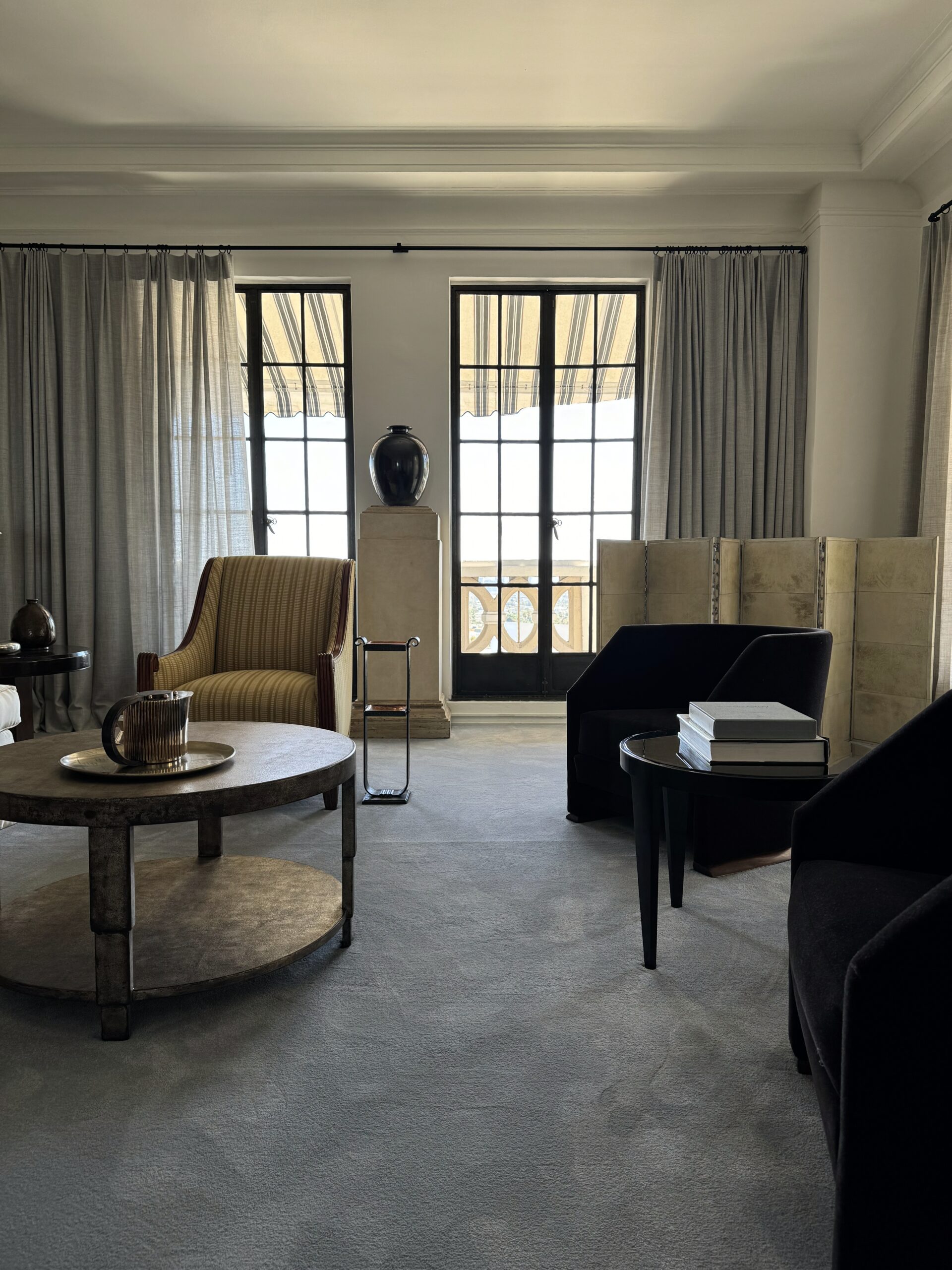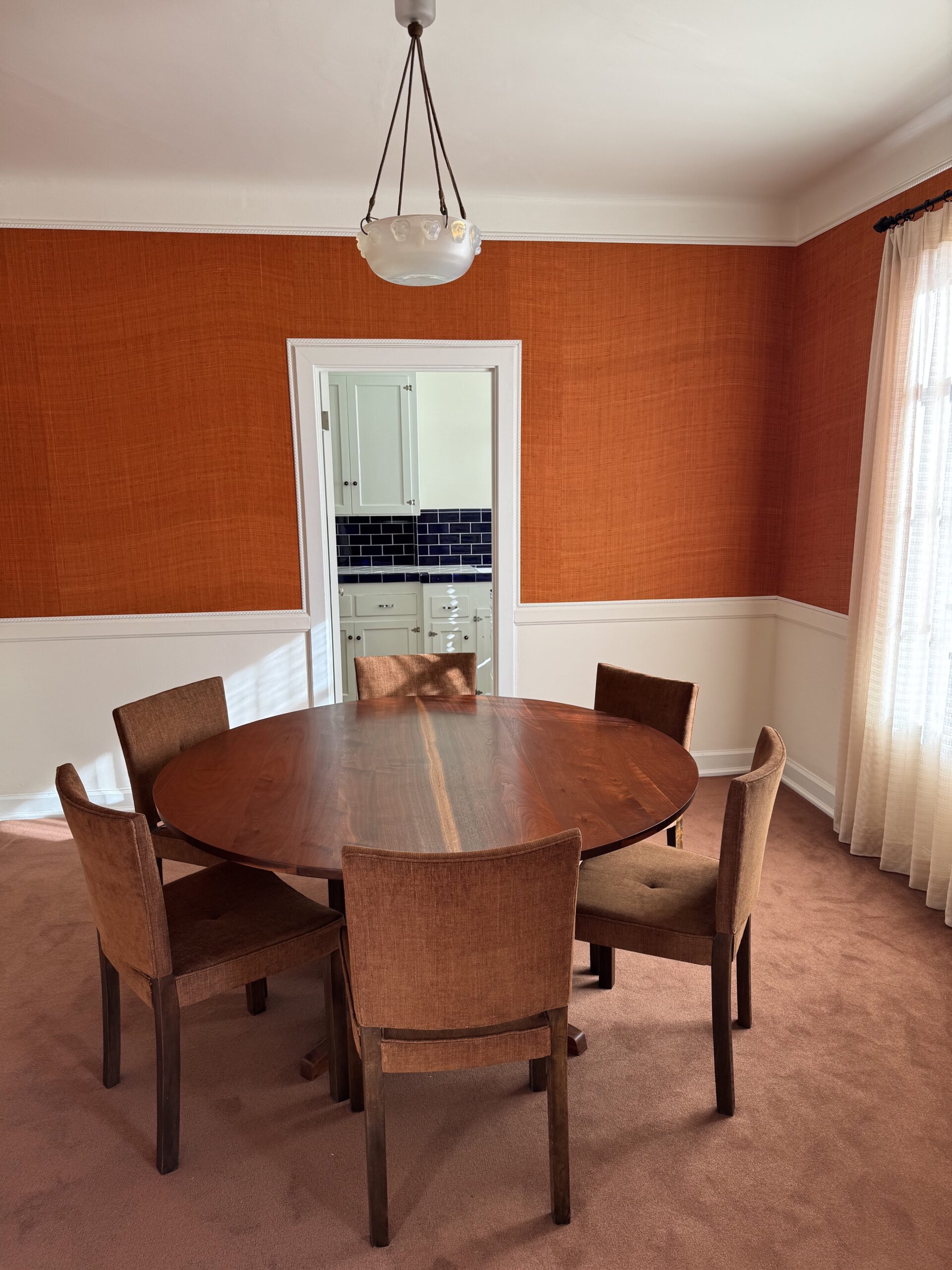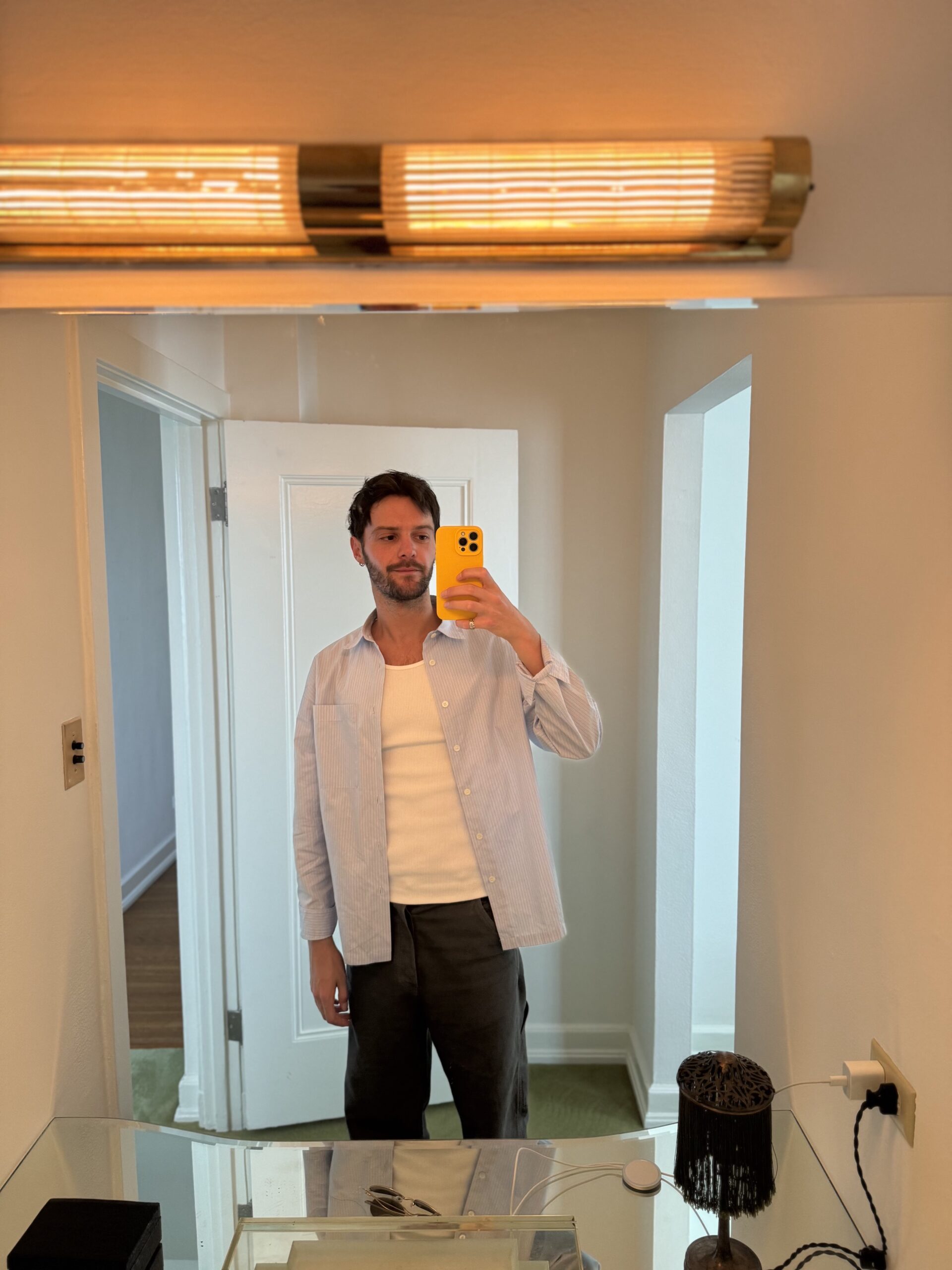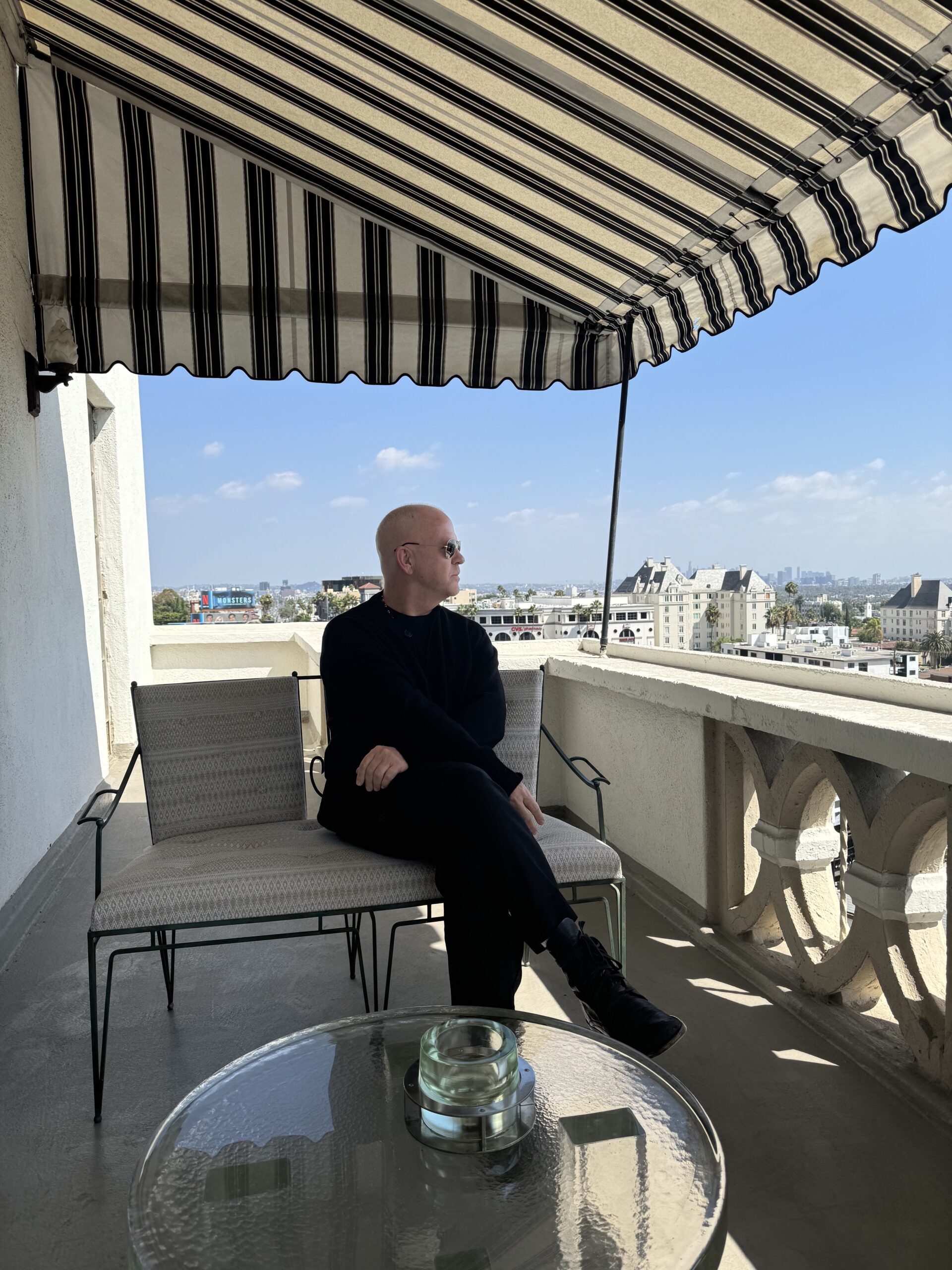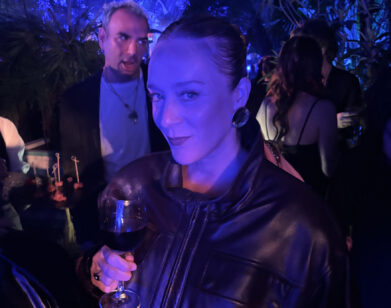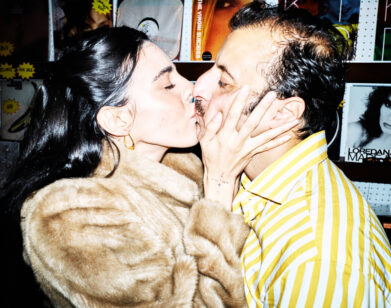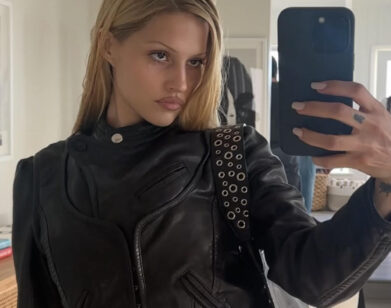TINSELTOWN
“Haunted by the Ghost of Hollywood”: Inside Ryan Murphy’s New Suite at the Chateau Marmont
For anyone who’s ever slipped into a booth at the storied Chateau Marmont, the hotel is less a place than a feeling—one of decadence, myth, and mischief. Few understand that better than Ryan Murphy, the maestro of Hollywood myth-making. The prolific creator behind Glee, American Horror Story, Feud and countless other prestige television shows has long used the Chateau as both a creative sanctuary and a personal hideout. “I’ve done almost every major actor meeting of my career there,” he explains. Enter Trevor Cheney, the gallerist and designer Murphy enlisted to help reimagine not one but two suites at the hotel as part of his new residency. The first is a reverent nod to the hotel’s 1920s art deco origins, fit with its original chartreuse drapes and nostalgic pink sheets. The second room, previously inhabited by Led Zeppelin, channels a more debauched spirit, with its British antiques and orange raffia wallpaper, evocative of rock and roll history. In conversation earlier this month, Murphy and Cheney got to talking about the ghosts of old Hollywood, writing Glee in the Chateau’s lobby many years ago, and how Murphy briefly bankrupted himself when he moved into the hotel during his first few years in L.A.
———
TREVOR CHENEY: Hi, Ryan.
RYAN MURPHY: Hi, Trevor.
CHENEY: You’re in L.A. at home?
MURPHY: I am, yes.
CHENEY: I feel like we’re almost there with Chateau.
MURPHY: Yes. Apparently one more week until my dream is done.
CHENEY: You took over one suite there?
MURPHY: Yes. I have a really interesting relationship with The Chateau. I’ve been going there literally since the first week I moved to Los Angeles, which was May of 1989. I’ve done almost every major actor meeting of my career there in the lobby. And after COVID, I was looking for a new way of being and working. Obviously, I have offices and places all around town for my production company, but I thought it would be a very fascinating idea to do an in-residence program at The Chateau. I just have such a history there.
CHENEY: You lived there?
MURPHY: I did. That was the beginning of my Hollywood life. I was living with Bill Condon and we had a place in Silver Lake. He went on to win an Oscar for Gods and Monsters, but we had a breakup and I didn’t really know that many people in L.A. So I basically thought, “Where can I go to feel at home during this very devastating breakup?” And the first thing that came to my mind was The Chateau. I went there and they had a suite, and I had just started my screenwriting career. I had just sold my first script to Steven Spielberg. I had a little money, but I really lived high on the hog. Back in those days, they would iron your newspapers for you so you didn’t get ink on your hands. And then my business manager called me four months later and said, “You spent every goddamn penny, you have to leave there today.” And then I went from living in the glamorous Chateau to sleeping on my friend Richard Sherman’s couch for six months. I have had a very long relationship with that place. So when I wanted to do an artistic residence. I asked Andre [Balazs] if I could have a suite and he said, “Yes.” I asked you to be involved in helping me do it, but you and I had a very good idea, which was that the first residence that we were working on pays tribute to the art deco beginnings of The Chateau.
CHENEY: Right, this early idea of when the hotel opened. Doing it almost like a time capsule.
MURPHY: Talk about that. How did you find all the pieces that we have there? Because you really went to town.
CHENEY: The Chateau opened in 1929, I believe, and I wanted everything to feel exactly like it was from the 20s and 30s, some 40s—just this perfect fantasy idea of what it should be like, what it did feel like, what it could have been. I think there’s something about how it looks now, it’s almost this 90s interpretation of deco, but giving something a little bit more glam, more refined, but still in the same spirit. We kept a couple pieces that were there originally, and I think that allowed us to keep the same spirit..
MURPHY: When I have guests stay there, they’re struck by the glamour of it. The pieces that you found, the provenance is so amazing. There’s several Jean-Michel Frank pieces that are from that deco period.
CHENEY: Yes, and there’s a JMF Parchment screen that we got in Paris. There’s the Jean Dunand coffee table, the silver leafed one. We have pieces by Lalique and a few anonymous pieces. There’s a regency style sofa, but some anonymous works mixed in always allow for something refreshing, something that’s not too careful. And I think it speaks about the way you live. I feel like you really fall in love with every piece that you have. And there’s this eclectic mix of high and low.
MURPHY: What I loved about doing that room is that I was really able to learn about the origins of how it was built a hundred years ago, how the owner of the hotel long before Andre was inspired by this chateau that he had seen in Europe and wanted to copy it almost down to the last brick.
CHENEY: Which they did.
MURPHY: Which they did. What I love about having people there, Hollywood people–and I’ve had so many people there–[is that] it feels like one of the few places still left in Hollywood that is deeply rooted in the tradition of Hollywood. There’s Musso and Franks, there’s The Chateau, and maybe the Argyle Hotel as well.
CHENEY: There’re very few places that represent Hollywood so well in Hollywood.
MURPHY: Yes. I was there when I was working on the current season of Monsters, which is about the mass murderer Ed Gein, who Psycho was based on. In our season, we talk about all the famous movies that Ed Gein influenced—Psycho, Silence of the Lambs, The Texas Chainsaw Massacre. But the spooky thing is, we were working in our room and we found out that Anthony Perkins stayed in that very room when he was shooting Psycho in town, and then I threw him out on my balcony for a publicity shoot. It literally is haunted by the ghost of Hollywood, and I think that’s what I love about it. It’s always been a place where people went to misbehave and cut loose and have fun. And it started off as a series of apartments. I also love that I told them, “Listen, we did a lot of work on that room. We took it down to the bones and we redid the molding and researched what it actually would’ve looked like.” That’s what I loved with you, working on some of the architectural details of what was in the original Chateau. And my agreement with them is when I leave that room, I’m going to dedicate everything in there for other guests so other people can enjoy it. My goal is to have a room on every floor. That’s what I want for you and I.
CHENEY: Let’s do it. Let’s keep going.
MURPHY: We’re working on another place in residence that I love too, that is a very different experience. It’s really for my actors who, when they’re shooting my shows, they’re going to be able to stay there. But it’s the opposite experience of The Chateau. It’s the room that Led Zeppelin stayed in, famously so.
CHENEY: Right, and we wanted to do a seventies rockstar type of influence. It’s a different time period of The Chateau, that was also very important.
MURPHY: Very important. Led Zeppelin, I believe they stayed there on and off for five years, and the lore goes that they finally were kicked out when they set that hallway on fire. Also, Stevie Nicks supposedly stayed in that room. But we also studied The Chateau in the 70s. The thing that we found in our research was that there was just so much brown.
CHENEY: Right. Like, heavy in tobacco and cream and brown.
MURPHY: It was a very different palette than The Chateau of the 20s, which was much more light, airy, pastel, plus black and white deco colors. This was a different phase.
CHENEY: These new ones are bold and intense.
MURPHY: And it has orange raffia wallpaper. The Chateau has also traditionally been an expat place. A lot of people from Europe, especially musicians and actors, love staying at The Chateau because it feels like home. I loved that it felt a little bit more English. Can you talk about that? I guess it was part of our Robert Plant obsession.
CHENEY: It was about the idea of a British rockstar being at The Chateau, which was really important. The first residence was very French, very early 20th century. Then having something that felt a little more, “If Robert Plant stayed there, what would it look like?” And I feel like they would have pieces that were English and stuff from the 19th century that was held onto. The British influence was very important, especially given the guests that have lived and stayed there, and it allowed us to grab more information. I think what’s important about The Chateau is how many people have stayed and lived there. There’s never a dull, boring moment—it’s either very fun or dangerous or intoxicating. I feel like a lot of people go there to get in trouble.
MURPHY: I always felt that that place was important to me. Every big Hollywood celebration I’ve had has been there. Every time I’ve won any major award–and I’ve won many awards and had many premieres–I’ve always had them at The Chateau. The other weird thing is, I’ve written so many of my projects there. I wrote every single episode of the first three seasons of Glee in that lobby. One thing in talking about our new seventies Led Zeppelin suite: I found your mixture of furniture to be fascinating, because you’re never precious about one single thing. You commissioned and had designed this suite of furniture from Green River?
CHENEY: Green River Project. Yeah, it’s like a regency style deco. We wanted contemporary, mixed with vintage, mixed with high design and to just have a suite that feels a bit eclectic. I didn’t want it to feel like you moved in and it was just done in a couple of months’ time; more that each piece added layers and dimension and depth and curiosity.
MURPHY: I was surprised when you suggested some of those [George] Nakashima pieces. I kept thinking you were going to go for English brown furniture, but you chose some really great Nakashima pieces.
CHENEY: I’ve always liked Nakashima. We’ve worked with a lot of Nakashima in the past, and there’s something about the brown, handsome, masculine quality to them. I always want pieces for you that feel clean and purposeful. The cleanliness of Nakashima and his very American work there mixed in with more of the older British pieces allows itself to stand out in a way that’s refined.
MURPHY: The bedrooms that we’ve done for the guests, they’re actors and people from my productions who roll into town and stay there. Let’s talk about that because they’re so different. In the art deco residence, I remember I had a very interesting research binge on the color chartreuse, which was oddly popular in the late 20s and has never been popular since. You can see it in some of the remaining draperies in The Chateau. Can you talk about that bedroom versus the Led Zeppelin suite bedroom?
CHENEY: For the first residence, the bedroom, I grabbed the color from the original drapes that were chartreuse with floral rose patterns, and I thought that that was one of the prettiest features that existed in the suite. And I thought, “Why don’t we just do the whole room this color?” I feel like that bedroom is very feminine and delicate, but bold and masculine in its scale of color. And with the pink satin sheets, it allows this candy-coated dream while that color also feels reminiscent and nostalgic.
MURPHY: When we landed on the chartreuse headboard and footboard, and then the pink, feminine covering, I said to you, “Jean Harlow would be right at home here.” And I recently found out that Jean Harlow actually stayed in that room.
CHENEY: In that room?
MURPHY: In that art deco room. I don’t know what she was doing, but there’s photos of her there. And I was like, “Wow, this does feel like it’s haunted with all of these icons that we paid tribute to without even knowing.” And the Led Zeppelin bedroom suite has a very fascinating story, because Marianne Faithfull spent some time in that room. And your instinct was to make that very English with print on print on print, which is still very Chateau.
CHENEY: I think so. And we’re doing wallpaper, headboard, bedding, all just the same print. I thought it would be a little bit dizzy and intoxicating, which I like. And that suite feels a little more rock and roll and punk. I think the other suite feels calm and soothing, and the hotel really allows for that retreat feeling, but also full debauchery, doing coke in the bathroom and running into people and making a mess.
MURPHY: I’ve always heard of people doing bad things there, but I’ve never seen people doing bad things. Maybe I’m such a puritan pilgrim. I guess they go somewhere else.
CHENEY: People are doing bad things there.
MURPHY: Young people of Hollywood, keep that spirit alive. Every decision that we made was either about restoring something, preserving something, or making it better and leaving it for the next generation.
CHENEY: You mentioned writing Glee in the lobby, and now you’re here again and have multiple shows. It seems very full circle.
MURPHY: This was a natural place because I felt like I was literally moving into my dream of what Hollywood was. When we had the fires here in Los Angeles, which was so devastating, our family home on the west side was spared, but we were evacuated and our house almost burned. But it was so moving to me to bring my children there to The Chateau in a time of crisis and have them see the work that we have been doing. This space provided comfort and solace to my children in a very dark time.
CHENEY: It always feels like home there.
MURPHY: It does. And this project, and working with you on it, has really brought me so much joy.

